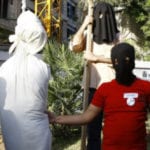 Our World
Our World  Our World
Our World  Pop Culture
Pop Culture 10 Incredible Female Comic Book Artists
 Crime
Crime 10 Terrifying Serial Killers from Centuries Ago
 Technology
Technology 10 Hilariously Over-Engineered Solutions to Simple Problems
 Miscellaneous
Miscellaneous 10 Ironic News Stories Straight out of an Alanis Morissette Song
 Politics
Politics 10 Lesser-Known Far-Right Groups of the 21st Century
 History
History Ten Revealing Facts about Daily Domestic Life in the Old West
 Weird Stuff
Weird Stuff 10 Everyday Products Surprisingly Made by Inmates
 Movies and TV
Movies and TV 10 Actors Dragged out of Retirement for One Key Role
 Creepy
Creepy 10 Lesser-Known Shapeshifter Legends from Around the World
 Our World
Our World 10 Science Facts That Will Change How You Look at the World
 Pop Culture
Pop Culture 10 Incredible Female Comic Book Artists
 Crime
Crime 10 Terrifying Serial Killers from Centuries Ago
Who's Behind Listverse?

Jamie Frater
Head Editor
Jamie founded Listverse due to an insatiable desire to share fascinating, obscure, and bizarre facts. He has been a guest speaker on numerous national radio and television stations and is a five time published author.
More About Us Technology
Technology 10 Hilariously Over-Engineered Solutions to Simple Problems
 Miscellaneous
Miscellaneous 10 Ironic News Stories Straight out of an Alanis Morissette Song
 Politics
Politics 10 Lesser-Known Far-Right Groups of the 21st Century
 History
History Ten Revealing Facts about Daily Domestic Life in the Old West
 Weird Stuff
Weird Stuff 10 Everyday Products Surprisingly Made by Inmates
 Movies and TV
Movies and TV 10 Actors Dragged out of Retirement for One Key Role
 Creepy
Creepy 10 Lesser-Known Shapeshifter Legends from Around the World
10 Dark Transylvanian Legends You Won’t Find In Dracula
Many times, the inhabitants of Transylvania, the Romanian region that everyone knows thanks to Bram Stoker’s Dracula, are quite annoyed by the fact that people have only heard about it from the novel. After all, the region has a fantastic culture, some of the best universities in the country, beautiful nature, and a unique cultural mix. But that’s not all; Transylvania is also home to many mysterious places and legends that could easily inspire other novels. Here are a few of them.
10 Mass Child Kidnapping And Resettlement
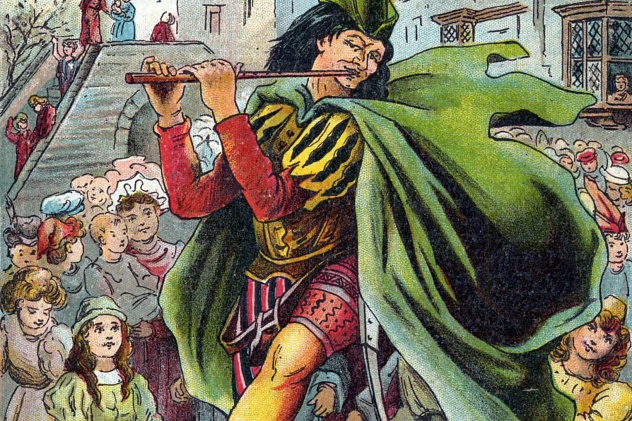
The legend of the Pied Piper is one of the best-known in the world, especially thanks to the series Silicon Valley. It’s pretty gruesome and was probably created to scar children for life instead of preparing them for sweet dreams.
In the story, the inhabitants of Hamelin find themselves unable to cope with a rat infestation, a problem which is solved by a mysterious piper in exchange for money. He gets rid of all the rats except for one with his magical tune, and as a result, the people refuse to pay him. Angered, the piper plays a different tune, which brainwashes all the children in Hamelin into following him. Some legends say that they all drowned or jumped off a cliff, while others simply don’t tell what happened to the children.
One of the versions, however, proves to be more optimistic. According to it, the children emerged from the Vaghis Cave in Transylvania and settled there. As strange as it may seem, this version is closest to the most widely accepted interpretation of the legend. Many people from Hamelin actually settled in Transylvania at the time of the story, leaving the German lands forever. The descendants of the settlers still live in small communities in Transylvania.
9 Hunyad Castle
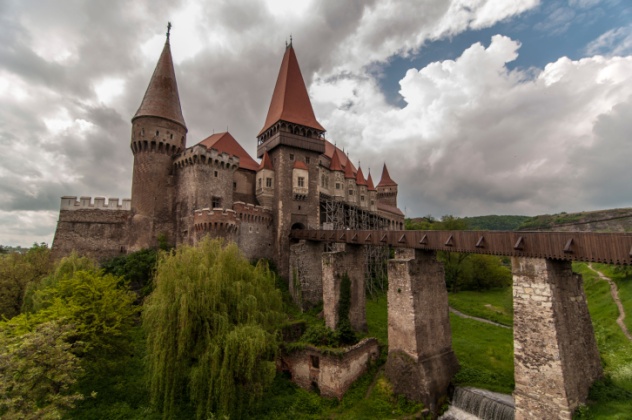
Hunyad (or Corvin) Castle in Hunedoara is an amazing construction dating back to the 14th or 15th century, depending on whom you ask. Interestingly, it also has a tower named Nje Bojsia (meaning “Don’t be afraid,”) by the Serbian mercenaries who fought there. Add that to the coat of arms of the ruling family, which is a raven, and you get the perfect haunted location. And people really, really wanted it to be haunted. The crew of Most Haunted Live spent three nights here looking for Dracula, trusting the myth that says that Vlad the Impaler himself had spent seven years in the dungeons of the castle.
Although there is no proof of this being true, the castle still had its fair share of pain and torment. It is said that one of the leaders of the fortress, Iancu of Hunedoara, promised freedom to three Turkish prisoners if they would dig in the rock until they found water. The three prisoners are said to have dug for no less than 28 years before reaching their goal. Unfortunately for them, Iancu had died, and his wife didn’t care about her late husband’s promises. She ordered them to be beheaded. Before that, however, it is said that the three men managed to write, “You now have water but you don’t have heart,” together with their names, on the well wall to show the family’s lack of honor. Today, visitors can see both the well and its inscription in Turkish.
8 The Mysterious Falling Boy
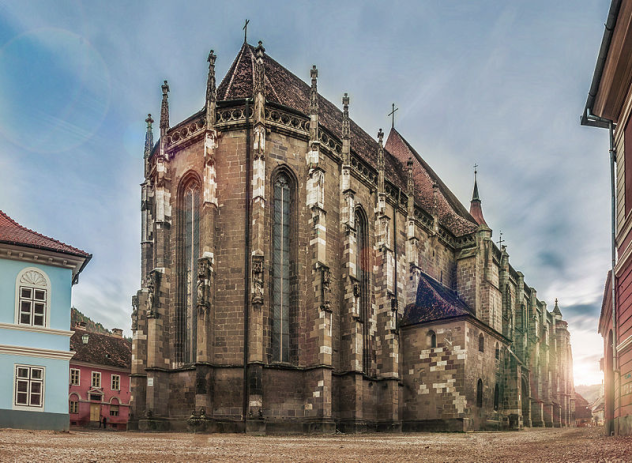
The Black Church in Brasov is one of the most beautiful Gothic constructions in Romania. It was damaged by a fire in the 17th century, hence the name. In the church, visitors can see both one of the most impressive organs in Europe and bullet holes from the violent revolution in 1989. The real mystery, however, is outside. On top of one of the exterior pillars is the statue of a little boy in danger of falling. Its meaning is uncertain, but it surely comes from a tragic story.
Some say a little boy died falling after being sent by the builders to check if the wall was straight. Saddened by the event, they decided to create the sculpture as an homage to the sacrifice. The other story, told more often, says that the little boy was an amazingly skilled apprentice who made his master jealous during the construction of the Black Church. The master pushed the boy to his death but later revealed the truth after being tormented by guilt. The rest of the builders decided to create the statue so that the talented young boy would not be forgotten.
7 The Bridge Of Lies
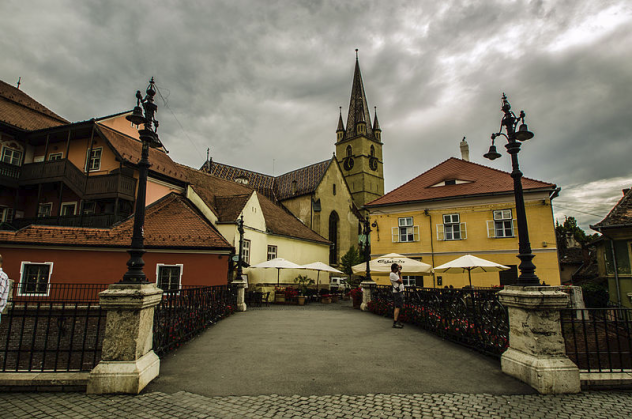
Sibiu, one of the most beautiful medieval cities in Romania, is the home of many tourist attractions. One of them, the Bridge of Lies, seems harmless enough and is actually a very beautiful spot for photographs. To clarify, it’s beautiful as long as you’re not a liar, if the legend is to be believed. The legend says that the bridge can make particular noises and even collapse whenever someone tells a lie while standing on it, making it a potentially lethal lie detector.
The legend has variations. One says that merchants who cheated their customers were thrown off the bridge, so honesty quickly became a common trait. Spicier stories involve couples. Girls who had lied about their purity before marriage were said to be thrown off the bridge, as well. Last, it’s said that the bridge was a place where cadets would promise the moon and the stars to local girls before disappearing and probably forgetting the girls’ names.
6 Abrud Castle’s Weeping Bride

The Abrud fortification in northern Transylvania was built in the 16th century and is currently being renovated so that tourists can enjoy its history. According to local legend, they could get much more than they bargained for.
It seems that the lord of the fortress, Francis Rakoczi, was successfully keeping an invading army at bay. In order to defeat him, the invaders sent a handsome officer to charm his daughter, who became so enamored that she revealed the existence of a secret tunnel. Her father managed to escape, but not before cursing her for eternity.
However, he was nice enough to allow redemption via kissing, as in any good story. So, the princess would be released if one brave man were to kiss her in her three ghostly forms— a snake, a frog, and a weeping bride, who would appear in front of him. As far as we know, the princess is still working on her bridal dress.
5 The Ghost That Hates Russians
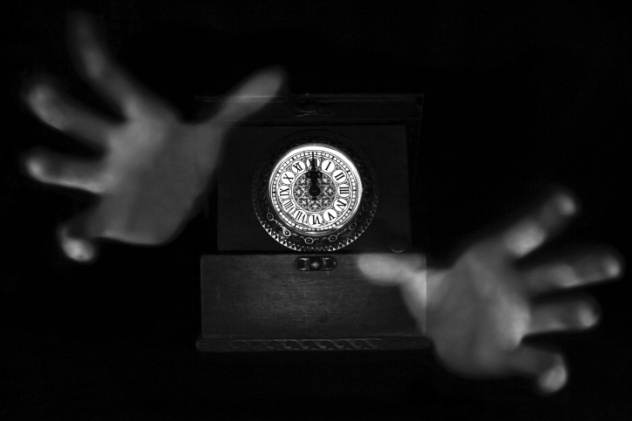
The Teleki mansion in the small town of Ocna Mures is currently a ruin and the subject of dispute between several descendants who want it returned to them. The entire trial may last for quite a long time, and the mansion is in a very advanced state of decay. As a result, most people would rather keep their distance, but safety norms are not the only reason for this.
Unlike most legends, the Teleki mansion got its creepy story during World War II, when the locals started to talk about a ghost inhabiting it. As expected, the Red Army was hardly impressed by the stories, and some soldiers entered the mansion to enjoy the wine hidden in its cellar. Having enjoyed it a bit too much for their own sake, they started to shoot their guns joyfully until the barrels burst. The soldiers drowned in the wine, which is probably one of the least dignified ways to die in a war. The locals, however, blamed the ghost, which apparently has remained active ever since, if we are to trust some blurry photos taken in 2011.
4 The Lakes That Require Human Sacrifices

“Sometimes water is alive, and when it is, it asks for a dead man’s head.” This is what the elders of villages in the Maramures region believe; they are very sure that the lakes in the area sometimes require human sacrifices. There are several mountain lakes with dark legends, each of which is called an iezer. One of the most famous stories refers to a sunken church. A long time ago, a flood covered a church and a few homes. The people in the village of Tisa claim that they sometimes hear the bells of the church at night during Easter.
Another, darker legend is that of the bottomless lakes, which swallow people without ever returning them. One lake is said to have swallowed all of the guests at a wedding after they had tried to cross it during the winter. Another lake, Vinderel, supposedly has a hidden vortex able to drown even the most skilled swimmers. Young girls used to bathe in it, as this ritual was said to help them get married within a year. The practice ended, however, when one of the girls was pulled under the water in spite of the fact that she was tied to the shore with rope. Finally, other legends talk about bloody pieces of flesh sometimes being seen at the surface of the water.
3 The Transylvanian Juliet

Practically every culture has created at least one story about forbidden love with a tragic ending. In addition to the world-famous stories like Tristan and Isolde, there are lesser-known ones, some even supported by artifacts we can see today. One such story is that of the bride from Garbova, transmitted from one generation to another by the small German community living here.
The story begins with a wealthy and quite authoritarian man who happened to have the most beautiful daughter in the village. As all the young men in the area began to court her, the father decided that she would marry someone who also possessed considerable wealth. But the girl had other plans, as she was madly in love with a poor servant. Realizing they could not be together, the servant left the village to make a living. Back home, the wedding was arranged and the weakened bride entered the church together with the one chosen by her father. However, she died in front of the altar, and the flower bouquet she was holding transformed into a stone cross, which is said to be the one visitors can see in the church in Garbova. The sad story inspired both a play and a poem, written by Ernst Thullner.
2 The Musical Fountain

In the 19th century, urban planning was quite different from today. Yet, there were a few cities that tried to stand out. In Targu Mures, which still is one of the most important cities in Transylvania, a “singing fountain” proved to be quite a unique source of entertainment. The masterpiece was created by a very skilled artist and inventor, Peter Bodor. Made of an ingeniously connected series of tubes, the fountain was both an organ and a flute. Thus, the people living in the city at the time could enjoy the music created by the flow of water.
Those living in Targu Mures today can only enjoy the legend of the fountain, unfortunately. Officially, it was destroyed by a storm. The legend, however, says that its own creator decided to silence its music forever through an ingenious trick. Having been arrested for creating counterfeited money, the man asked to see the fountain once more before being taken away by the police. He used this brief visit to remove one small piece, and the entire mechanism stopped functioning without anyone ever being able to replicate it. In the end, the entire fountain was removed. Bodor got his revenge.
1 Extreme Marriage Counseling Through Imprisonment

This is a legend told again and again in the area around Sibiu, and it’s hard to track its exact origins. In the past, couples looking to separate were locked in the Prison Tower in Sibiu for two weeks. During this time, they had to sleep in the same bed and eat together, which apparently resulted in meaningful conversations, given there were no smart phones at the time. As a result, it is said that only one couple actually went on with the divorce after spending two weeks locked up together.
As sweet as the story may sound, there is always that dark twist that kills the magic. This dark twist can be found in the legend of the fortress-church in Cisnadioara, a small town close to Sibiu. In this case, the couples went through the same marriage counseling as their fellow citizens in Sibiu. The difference is that they were never to be released unless they made up. Apparently, the people in Cisnadioara took the phrase “till death do us part” very seriously.
Ana-Maria is a Romanian currently working in the start-up industry who spends most of her spare time feeding her passion for recent history and literature.



